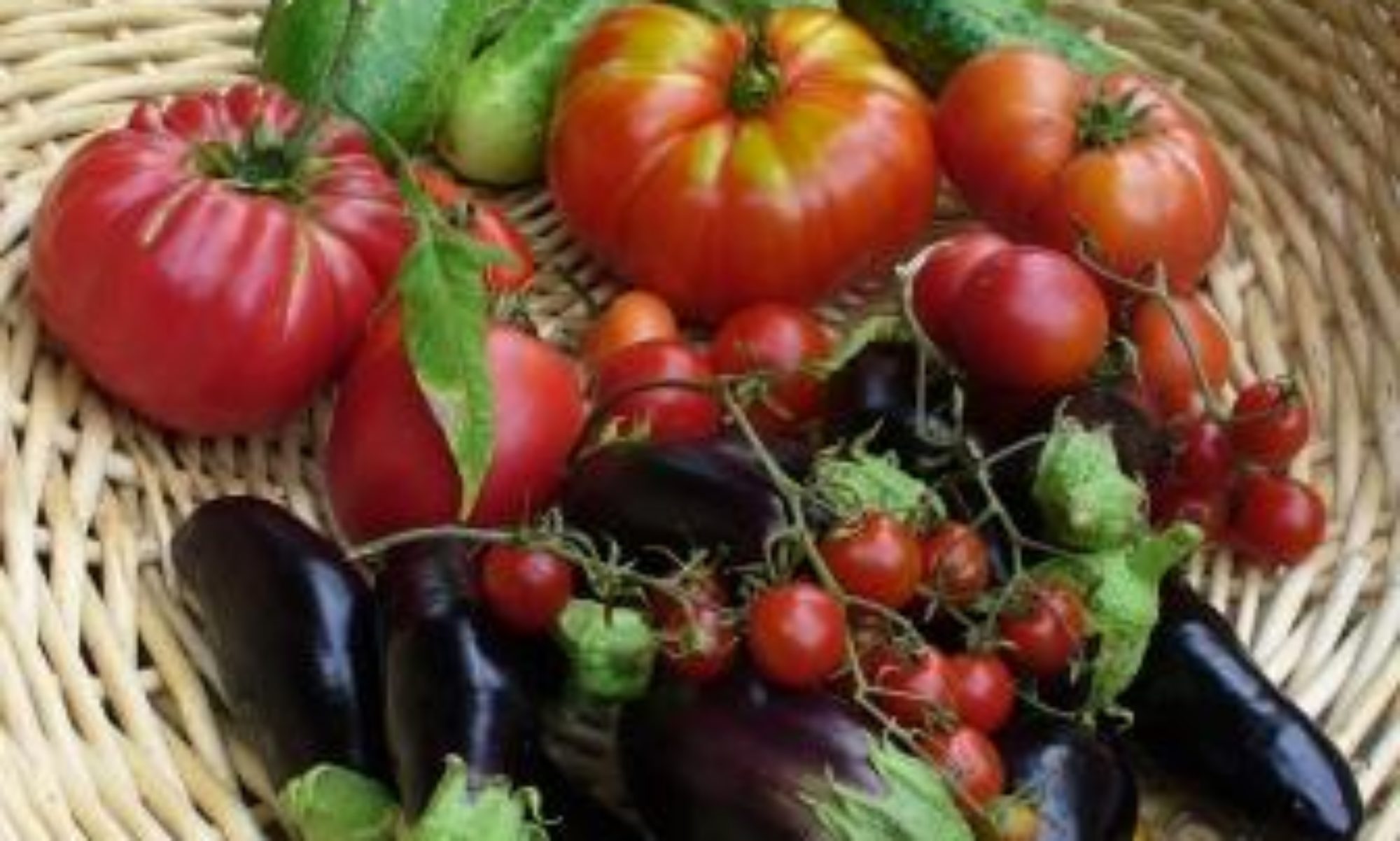Yeller. This yellow-orange variety arose in my garden as the result of unintentional cross-breeding of Manitoba with another unknown variety.
Costoluto Genovese is an old Italian variety, with intense acidic flavor that is ideal for sauces.
Koralik, as usual, was one of the earliest tomatoes to ripen, producing large yields of marble to ping-pong ball-sized fruit.
Goodby Hot July
Alderman Peas
Hot!!!
A week of record-breaking temperatures (pushing 100 F) is ripening vegatables at a record pace. Ripe tomatoes in the garden now include Koralik, New Hampshire SureCrop, Alicante, Besser, Slava and First Pick. Here is Alicante.
Hot evenings call for cold soups. Last night I made a fantastic Gazpacho.
——————————————–
Gazpacho – Andalusian cold soup.
Quarter 2 lb of tomatoes (I used Alicante).
Dice one green pepper. I used an Italian frying pepper from the garden.
Dice one small cucumber.
Slice one small onion. (I used a fresh onion from the garden, and included the greens).
Quarter one clove of garlic.
Tear two slices of stale bread into pieces (soak in water if bread is too dry).
Add these incredients to a food processor, along with one half cup of extra virgin olive oil and a dash of salt.
Process a few seconds, stopping when it still has a little bit of a chunky texture.
Refrigerate until well-chilled.
¡Buen provecho!
First Pick
The weather is continuing hot (85 degrees) and sunny. Tomatoes continue to flourish. True to its name, the First Pick tomato variety is among the first to ripen. This heirloom variety originated with the Baptiste family of Reims, France. Unlike most other early tomatoes, First Pick plants are large and indeterminate. They produce meaty 1″-2″ fruit.
Cherry Baby
Yes, and the birds gave up on the huge crop of pie cherries, too. I pitted and canned 7 quarts of these beauties. I also made a fantastic cherry almond cake.
Here is the recipe at Epicurious. I modified it slightly by using only 1 stick of butter, adding 1/4 cup corn oil, and mixing the cherries into the batter, rather than placing on top of the butter.
Berry Berry Nice
Kraut
My cabbages are doing magnificently, despite the recent heat. With the help of my friend Scott, I coinverted 15 lbs of cabbage into saurkraut. Here is the recipe.
Cabbage was shredded in a food processor. 5 lb batches of shredded cabbage were sprinked with 3 Tbsp. of salt (non-iodized pickling salt), tossed to distribute the salt, and then allowed to stand 5 minutes until wilted. The cabbage was packed tightly into a large glass container, pressing with the bottom of a wine bottle until the released cabbage juices rose to the top and covered the cabbage. This was covered with a dish plate, and the plate was weighted down with two quart zip-lock plastic bags filled with water. This will sit in the corner of our kitchen for 2 weeks, at which point it should be ready to eat. With refrigeration, the finished product will last a year. Alternatively, the kraut can be canned in a boiling water bath processor.
juices rose to the top and covered the cabbage. This was covered with a dish plate, and the plate was weighted down with two quart zip-lock plastic bags filled with water. This will sit in the corner of our kitchen for 2 weeks, at which point it should be ready to eat. With refrigeration, the finished product will last a year. Alternatively, the kraut can be canned in a boiling water bath processor.
Cabbage was shredded in a food processor. 5 lb batches of shredded cabbage were sprinked with 3 Tbsp. of salt (non-iodized pickling salt), tossed to distribute the salt, and then allowed to stand 5 minutes until wilted. The cabbage was packed tightly into a large glass container, pressing with the bottom of a wine bottle until the released cabbage
 juices rose to the top and covered the cabbage. This was covered with a dish plate, and the plate was weighted down with two quart zip-lock plastic bags filled with water. This will sit in the corner of our kitchen for 2 weeks, at which point it should be ready to eat. With refrigeration, the finished product will last a year. Alternatively, the kraut can be canned in a boiling water bath processor.
juices rose to the top and covered the cabbage. This was covered with a dish plate, and the plate was weighted down with two quart zip-lock plastic bags filled with water. This will sit in the corner of our kitchen for 2 weeks, at which point it should be ready to eat. With refrigeration, the finished product will last a year. Alternatively, the kraut can be canned in a boiling water bath processor.









